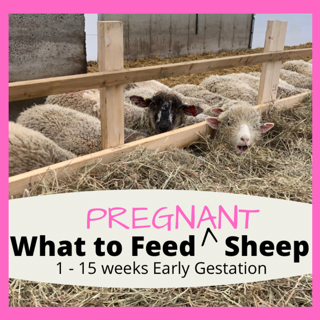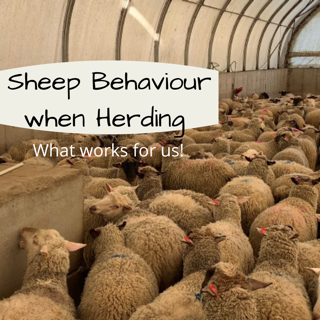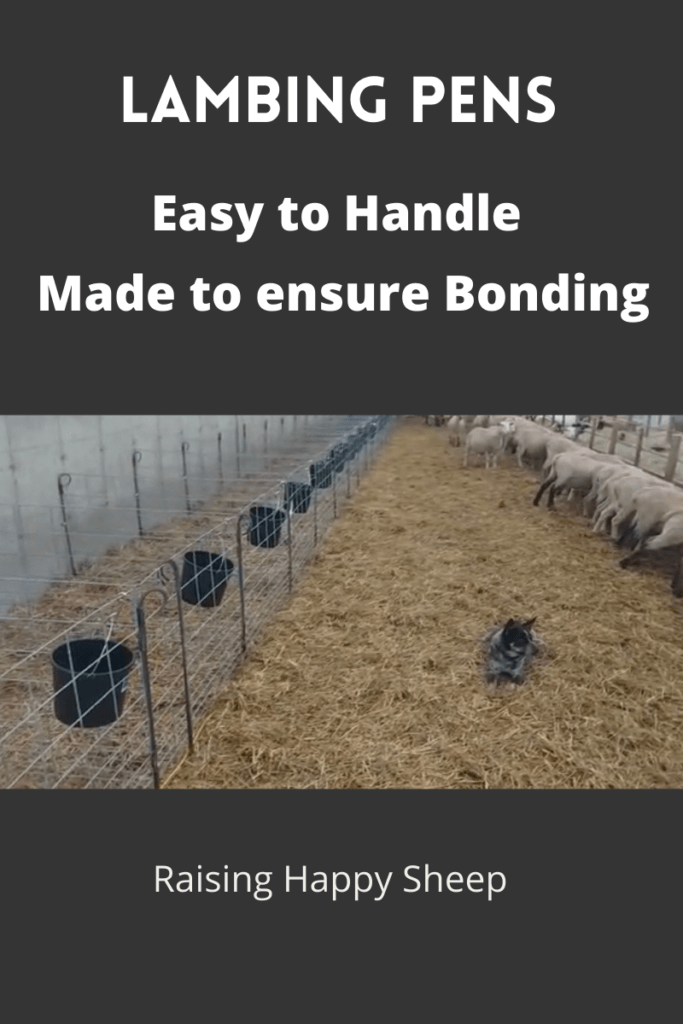How to feed sheep successfully in early gestation focuses on the first 15 weeks from breeding.
What and how to feed pregnant sheep? Let’s first review how long their pregnancy term is.
Gestation – (Pregnancy)
The average gestation length in sheep varies from 142 to 152 days. The average is 147 days. Individual pregnancies may vary from 138 to 159 days. This works out to be approximately 21 weeks. [1]
The gestation is broken down into three stages being:
- Early gestation,
- Mid gestation and
- Late gestation
The Ewe’s Production Cycle
The nutritional requirements of a ewe depend on her age and stage of production. A ewe’s production cycle can be broken down into seven stages:
- Maintenance,
- Flushing,
- Early gestation,
- Mid gestation,
- Late gestation,
- Lactation and
- Post weaning.
Nutritional management must change for each of these production stages if a producer is to have a successful lamb crop. And, more importantly, good returns for market lambs.
The nutritional requirements for ewes are least during maintenance and early gestation. And, are greatest during late gestation and lactation (especially for ewes carrying multiple fetuses or nursing twins).
During all of these stages; ewes should be provided with a good source of trace minerals and ample amounts of fresh water. [2]
Nutrition during early gestation is quite simple. Ewes need only slightly above maintenance levels of nutrition for the first 15 weeks of pregnancy. Mid-gestation is important for development of the placenta. [1]

After breeding, ewe flock are best maintained when fed enough to allow them to maintain their body weight. Hay fed should be sufficient. However; poorer quality roughage during this period requires some supplementation with grain. This is another reason that supports the need to complete a hay analysis. Without this information on-hand, we would not have the information on the feed quality available to us.
Feed Sheep Successfully in Early Gestation First 15 Weeks
Early Gestation (15 weeks) In early pregnancy, while fetal growth is minimal. The total feed requirement of the ewe is not significantly different from the maintenance period. However; nutritional management in the first month is still important for minimizing early embryonic losses. Ideally; the target for nutritional management in the first month of pregnancy would be maintenance to a slight increase in weight. Early in pregnancy; ewes should be fed a similar ration to ewes on maintenance rations, with a slight increase in the amount offered. The National Research Council (NRC) suggests a post flushing weight gain of 0.03 kg (0.07 lb) / day. [2]
Mid Gestation
Mid Gestation (up to 100 days) Five weeks after breeding. Although their weights are insignificant; the embryos are well established in the uterus. A live weight increase for the ewes of approximately 2 kg (4 lb.), in months two and three, equates to a 1 kg loss from the ewe’s own tissues. While such a loss is tolerable, severe under-nutrition for even short periods can profoundly affect fetal development. Any degree of under-nutrition will have greater impacts on ewes that are already in poor condition. [2]
Importance of NOT Over-Feeding
Over-feeding during mid-pregnancy can also be detrimental. Increasing a ewe’s body condition score above 3.5 at this time is wasteful, and increases feed costs. In addition; excessive abdominal fat combined with the increased uterus size can physically restrict the ewe’s feed consumption in late pregnancy. [2]
Weight Loss
It should be noted that when weight is lost at any time during the ewe’s reproductive cycle; it must be regained at a later date. In terms of total nutrient requirements it is more costly to lose and regain weight than to simply maintain it. [2]
In Summary
Pre-Breeding is otherwise known as, FLUSHING. Meaning that we want to modify our feeding plan four (4) weeks prior to allowing the rams to join the ewes to breed. Feeding plan is designed with the hay analysis. Corn is introduced at approximately ½ lb to 1 lb per ewe daily. Hay fed is 4 lbs per ewe daily. Once the rams join the ewes we continue this feed plan. Three weeks later; the rams are removed from the flock and we continue to feed ½ lb corn to the ewes for an additional 2 week period.
After this 9 week duration, the feed plan is altered. We are now jumping into the Early Gestation Production Cycle of Pregnancy.
This early gestation cycle is 1 to 15 weeks into the pregnancy. Our goal is to maintain the ewe’s body condition. It’s imperative to not over-feed nor allow her to lose weight. This can be accomplished by feeding hay lower in protein along with minerals, salt and water. The key tip here is that we stop feeding the corn and we focus on maintaining her body condition. If needed, we work with the nutritionist and re-adjust the feeding plan if the sheep body condition is not ideal.





